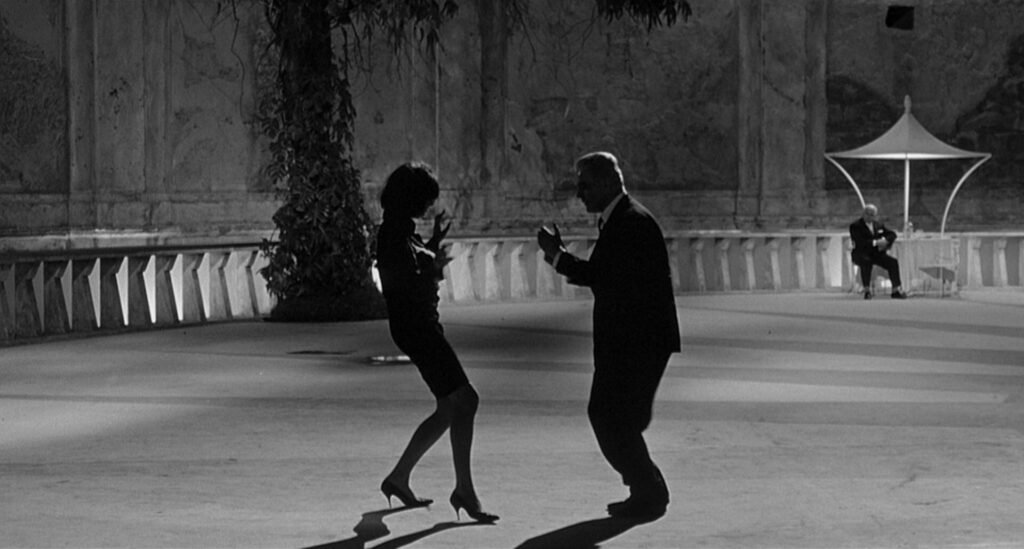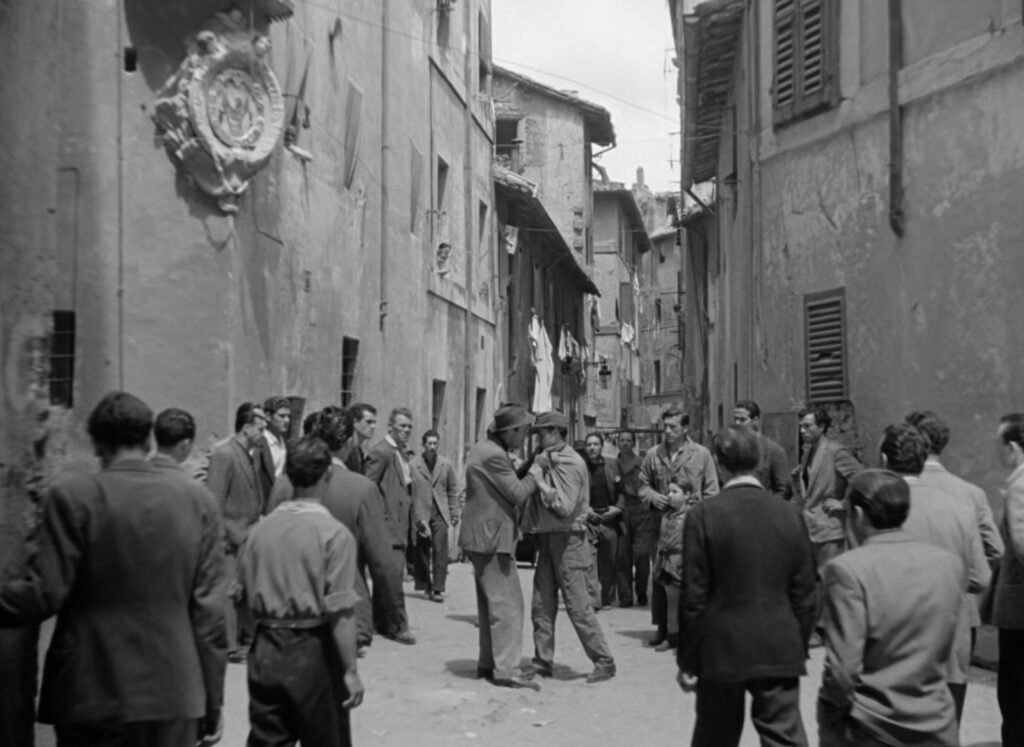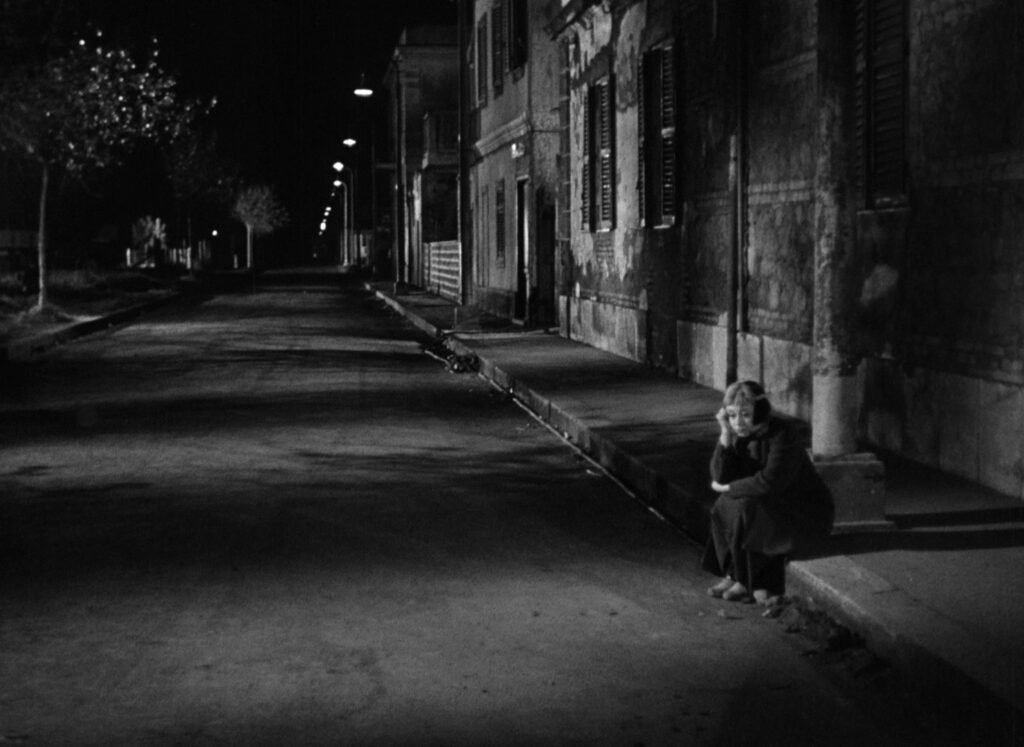Italian Neorealism emerged in the aftermath of World War II, challenging conventional by depicting the harsh realities of post-war Italy. This new style focused on the lives of ordinary people, particularly the working class, and their daily struggles in a country ravaged by war. Italian Neorealism revolutionized the film industry, influencing directors and movements worldwide, leaving a lasting mark on the history of cinema.
The birth of Italian Neorealism was deeply rooted in the socio-political context of Italy following the fall of Mussolini’s Fascist regime. The country faced numerous challenges, including widespread poverty, unemployment, and the devastating effects of the war on its cities and infrastructure. Neorealist filmmakers sought to capture these realities on screen, using cinema as a tool for social commentary and a means of reflecting the experiences of the Italian people during this difficult period.
This article aims to explore the key aspects of Italian Neorealism, including its origins and influences, defining characteristics, prominent figures and their contributions, landmark films, and the enduring impact and legacy of this groundbreaking movement. By examining the evolution of Neorealism and its place within the broader context, we can better understand its significance and the ways in which it continues to shape contemporary cinema.

Table of Contents
Origins and Influences
World War II had a profound impact on Italian society and cinema, creating the conditions that gave rise to the Neorealist movement. The war’s aftermath left Italy in ruins, with many cities devastated by bombing, and the population struggling with poverty, hunger, and displacement. This stark reality became the primary subject matter for Neorealist filmmakers, who sought to document the experiences of ordinary Italians and shed light on the social issues they faced.
Italian Neorealism drew inspiration from various artistic and literary movements, particularly the French Poetic Realism of the 1930s. Films such as Jean Renoir’s “La Grande Illusion” (1937) and Marcel Carné’s “Le Quai des Brumes” (1938) had a significant influence on Neorealist directors, who admired their realistic portrayals of working-class life and their emphasis on social commentary. Neorealist filmmakers adapted these themes and techniques to the Italian context, creating a distinct cinematic style that reflected the post-war reality of their country.
The Italian literary tradition of verismo, which emerged in the late 19th century, also played a role in shaping the themes and aesthetics of Neorealism. Verismo writers, such as Giovanni Verga and Luigi Capuana, focused on the lives of the lower classes and the harsh realities of rural and urban poverty. Their works, characterized by a commitment to realism and social criticism, provided a foundation for the Neorealist movement, which sought to bring a similar level of authenticity and social awareness to the medium of film.
Key Characteristics of Italian Neorealism
One of the defining features of Italian Neorealism was the use of non-professional actors, often cast from the local communities where the films were shot. This approach added a layer of authenticity to the performances, as these untrained actors brought their real-life experiences and emotions to the screen. By working with non-professionals, Neorealist directors were able to capture the genuine struggles and triumphs of ordinary people, creating a powerful sense of realism that resonated with audiences.
Neorealist films were typically shot on location, rather than in studios, to capture the atmosphere and texture of post-war Italy. Directors like Roberto Rossellini and Vittorio De Sica often filmed in war-torn cities, using the rubble and ruins as a backdrop for their stories. This on-location shooting style not only added visual realism to the films but also served as a stark reminder of the devastating impact of the war on Italian society.
Italian Neorealism often employed an episodic narrative structure, focusing on the daily lives and struggles of its characters rather than following a strict, linear plot. This approach allowed filmmakers to explore the complexities of human experience and to highlight the small, seemingly insignificant moments that make up the fabric of everyday life. By eschewing traditional narrative conventions, Neorealist directors were able to create a natural and nuanced portrayal of the human condition.
At the heart of Italian Neorealism was a deep concern for the lives of ordinary people, particularly those living in poverty and on the margins of society. Films often depicted the struggles of the working class, shedding light on the harsh realities of unemployment, homelessness, and social inequality. By focusing on these themes, Neorealist directors gave a voice to the voiceless and brought attention to the urgent social issues facing post-war Italy.

Prominent Figures and Their Contributions
Roberto Rossellini is widely regarded as one of the fathers of Italian Neorealism, with his films “Rome, Open City” (1945) and “Paisan” (1946) setting the stage for the movement. “Rome, Open City,” shot in the immediate aftermath of the war, depicted the struggles of the Italian Resistance against the Nazi occupation, blending fictional narrative with documentary-style realism. “Paisan,” a series of six vignettes set in different parts of Italy, further solidified Rossellini’s commitment to capturing the diverse experiences of ordinary Italians during the war and its aftermath.
Vittorio De Sica, another key figure in the Neorealist movement, directed some of the most iconic and influential films of the era. His masterpiece, “Bicycle Thieves” (1948), tells the story of a poor father searching for his stolen bicycle, which he needs to maintain his job and support his family. The film’s simple yet powerful narrative, combined with its use of non-professional actors and on-location shooting, made it a quintessential example of Neorealist cinema.
Luchino Visconti, another prominent Neorealist director, brought a unique perspective to the movement, often blending elements of Neorealism with a more operatic and melodramatic style. His debut film, “Ossessione” (1943), is considered a precursor to Neorealism, adapting the American novel “The Postman Always Rings Twice” to the Italian context and exploring themes of passion, betrayal, and social class. Visconti’s later films, such as “La Terra Trema” (1948) and “Bellissima” (1951), further demonstrated his ability to combine Neorealist principles with a more heightened visual and emotional aesthetic.
Cesare Zavattini, while not a director himself, played a crucial role in the development and success of Italian Neorealism as a screenwriter and theorist. He collaborated with Vittorio De Sica on many of his most famous films, including “Bicycle Thieves” and “Umberto D,” and was a vocal advocate for the Neorealist approach to filmmaking. Zavattini believed that cinema should be a tool for social change, and his scripts often focused on the lives of ordinary people and the challenges they faced in post-war Italy. His contributions to the movement, both through his writing and his intellectual leadership, helped to shape the direction and legacy of Italian Neorealism.
Landmark Neorealist Films
Giuseppe De Santis’s “Bitter Rice” (1949) is a notable example of how Neorealist films often focused on the lives and struggles of working-class women. Set in the rice fields of Northern Italy, the film follows a group of female laborers as they navigate the harsh working conditions, sexual exploitation, and social hierarchies that shape their lives. “Bitter Rice” combines elements of Neorealism with a more melodramatic narrative, highlighting the intersection of class and gender in post-war Italian society.
Vittorio De Sica’s “Umberto D” (1952), tells the story of an elderly pensioner struggling to survive in post-war Rome. Faced with eviction, loneliness, and the indifference of society, Umberto D’s plight is a powerful indictment of the social inequalities and injustices that persisted in Italy long after the war had ended. The film’s realistic portrayal of an aging protagonist, played by non-professional actor Carlo Battisti, adds to its emotional impact and its place as a landmark of Neorealist cinema.
Federico Fellini’s “La Strada” (1954) marks a transition point between Italian Neorealism and the more personal, imaginative style that would come to define the director’s later works. The film follows Gelsomina, a young woman sold by her mother to a traveling circus performer, as she journeys through the Italian countryside and confronts the harsh realities of life on the margins of society. While “La Strada” incorporates elements of Neorealism, such as its focus on the working class and its use of non-professional actors, it also displays Fellini’s unique vision and his ability to blend realism with symbolism and poetry.

The Impact and Legacy of Italian Neorealism
The influence of Italian Neorealism on the French New Wave cannot be overstated. Directors like François Truffaut and Jean-Luc Godard were deeply inspired by the works of Rossellini, De Sica, and Visconti, and sought to incorporate Neorealist techniques and themes into their own films. The French New Wave’s emphasis on location shooting, natural lighting, and improvised performances owes a great deal to the Neorealist tradition, as does its focus on the lives of ordinary people and its rejection of traditional cinematic conventions.
In India, the legendary filmmaker Satyajit Ray drew direct inspiration from Italian Neorealism when creating his “Apu Trilogy” (1955-1959). Ray’s films, which follow the life of a young Bengali boy named Apu from childhood to adulthood, share many similarities with Neorealist works, including their use of non-professional actors, their attention to social and economic realities, and their poetic, humanistic approach to storytelling. The success of Ray’s films helped to establish the Indian Parallel Cinema movement, which continued to explore Neorealist themes and techniques in the Indian context.
The impact of Italian Neorealism can also be seen in the works of later Italian directors, such as Michelangelo Antonioni and Pier Paolo Pasolini. Antonioni’s films, while more experimental in form and style, share Neorealism’s interest in the alienation and disillusionment of modern life, as seen in works like “L’Avventura” (1960) and “La Notte” (1961). Pasolini, on the other hand, combined Neorealist elements with a more poetic, mythical approach, as evidenced in films like “Accattone” (1961) and “The Gospel According to St. Matthew” (1964).
The legacy of Italian Neorealism can be seen in the continued prominence of social realism in world cinema. From the works of the Dardenne brothers in Belgium, known for their raw, intimate portrayals of working-class life, to the films of Jia Zhangke in China, which document the rapid social and economic changes of contemporary Chinese society. By focusing on the lives of ordinary people and the challenges they face, these filmmakers continue to carry on the Neorealist tradition of using cinema as a tool for social commentary and a means of promoting empathy and understanding.
Conclusion
Italian Neorealism emerged as a powerful force in post-war cinema, revolutionizing the way films were made and the stories they told. By focusing on the lives of ordinary people, employing non-professional actors, and shooting on location, Neorealist directors created a new cinematic language that prioritized authenticity, social commentary, and the exploration of the human condition.
The impact of Neorealism on global cinema cannot be overstated. Its influence can be seen in the works of filmmakers around the world, from the French New Wave to the Indian Parallel Cinema movement, and its legacy continues to shape contemporary cinema. The Neorealist emphasis on social realism, humanism, and the power of cinema to effect change remains as relevant today as it was in the post-war era.
Ultimately, the enduring significance of Italian Neorealism lies in its ability to use the medium of film as a tool for social commentary, empathy, and understanding. By shedding light on the struggles and triumphs of ordinary people, Neorealist directors not only captured the reality of post-war Italy but also tapped into the universal human experiences that connect us all. In doing so, they created a body of work that continues to inspire and move audiences, reminding us of the transformative power of cinema to reflect our world and, in turn, to change it.
Best Italian Neorealism Films
- 8½ (1963) Director: Federico Fellini
- Bicycle Thieves (1948) Director: Vittorio De Sica
- La Dolce Vita (1960) Director: Federico Fellini
- Paisan (1946) Director: Roberto Rossellini
- Amarcord (1973) Director: Federico Fellini
- Blow-Up (1966) Director: Michelangelo Antonioni
- Rome, Open City (1945) Director: Roberto Rossellini
- Stromboli (1950) Director: Roberto Rossellini
- Death in Venice (1971) Director: Luchino Visconti
- The Bullocks (1953) Director: Federico Fellini
- Mamma Roma (1962) Director: Pier Paolo Pasolini
- Obsession (1943) Director: Luchino Visconti
- Journey to Italy (1954) Director: Roberto Rossellini
- Yesterday, Today and Tomorrow (1963) Director: Vittorio De Sica
- Roma (1972) Director: Federico Fellini
- The Road (1954) Director: Federico Fellini
- Germany Year Zero (1948) Director: Roberto Rossellini
- Umberto D. (1952) Director: Vittorio De Sica
- Nights of Cabiria (1957) Director: Federico Fellini
- La Terra Trema (1948) Director: Luchino Visconti
- Red Desert (1964) Director: Michelangelo Antonioni
- The Children Are Watching Us (1943) Director: Vittorio De Sica
- Europe ’51 (1952) Director: Roberto Rossellini
- Bellissima (1951) Director: Luchino Visconti
- The Flowers of St. Francis (1950) Director: Roberto Rossellini
- Miracle in Milan (1951) Director: Vittorio De Sica
What is the significance of the Italian Neorealism movement in cinema?
Italian Neorealism revolutionized cinema after World War II, focusing on authentic, on-location shooting and non-professional actors to capture the raw experiences of ordinary people, especially the working class. This groundbreaking approach allowed filmmakers to shed light on urgent social issues and the harsh realities of post-war Italy. Neorealism’s emphasis on realism, social commentary, and the human condition profoundly impacted the cultural and artistic landscape, influencing countless filmmakers and movements worldwide.
How did Italian Neorealism develop after World War II?
Italian Neorealism emerged as a vital cinematic movement in the wake of World War II, confronting the harsh realities of post-war Italy. Directors like Rossellini, De Sica, and Visconti saw cinema as a tool for documenting these realities and promoting social change. Drawing inspiration from verismo literature and French Poetic Realism, they created a distinctly Italian style that prioritized authenticity, humanism, and everyday life. Neorealist films gave voice to the marginalized, shedding light on the struggles of ordinary Italians and the need for reform.
In what ways did Italian Neorealism influence global filmmaking?
Italian Neorealism’s impact on global cinema is immense. Its emphasis on social realism, authentic storytelling, and film as a tool for change resonated with filmmakers worldwide. The French New Wave directors incorporated Neorealist techniques into their films, while Satyajit Ray’s “Apu Trilogy” adapted its themes to the Indian context. Filmmakers like Scorsese, Kiarostami, and the Dardenne brothers have also used cinema to explore social and human realities. By prioritizing authenticity, empathy, and the transformative potential of film, Italian Neorealism set a new standard for socially engaged cinema that continues to inspire filmmakers today.
What are the hallmarks of the Italian Neorealism film movement from 1942 to 1952?
The Italian Neorealism movement (1942-1952) was characterized by its use of non-professional actors, on-location filming, episodic narratives, and a focus on the lives of ordinary people. Neorealist films depicted the struggles of the working class and the harsh realities of poverty, unemployment, and social inequality in post-war Italy. Central to the movement was a deep concern for social realism and a critical view of contemporary issues. Films like “Bicycle Thieves,” “Umberto D,” and “Rome, Open City” exemplified these hallmarks, creating a powerful and enduring legacy that inspired generations of filmmakers around the world.